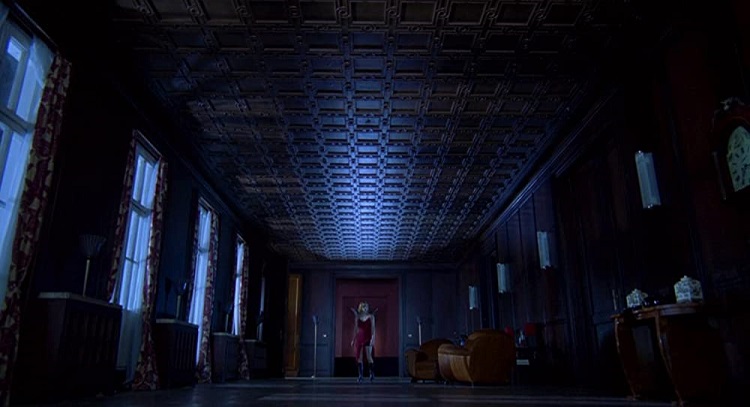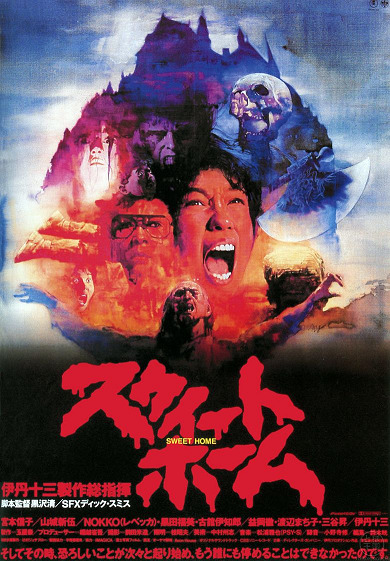The Art of Videogame Adaptation and Resident Evil at 20
Video game movies have a bad reputation. Some of this is from video game funs upset that films make sild divergences from the source material (Super Mario Bros, for example). Some of it is that the movies are often not very good (like any made by Uwe Boll). But a major factor is that story isn’t a core component of most videogames – gameplay is. Stories are often there to carry you along to the next time you play. And because you’re playing, you’re already bought into the game. Heavy Rain is an example of a game where the actual story isn’t that good (in my opinion), but some people really like it because the game does a good job of putting them into the role of the characters. In order to be a good adaptation, then, a video game movie either needs to lean into its story and make itself goofy enough to take it (Street Fighter) or it needs to take a step back and look at what people actually liked about the original game and what pieces would work in a movie. That’s what makes Resident Evil such a successful adaptation – that it thoroughly respects the original work, but it’s prepared to be its own thing.

Part of the reason for that respect is that it was made by a fan of the game. Writer and director Paul WS Anderson (who had previously directed the surprise video-game based success Mortal Kombat) played the first two Resident Evil games and liked them so much that he decided to write a zombie movie inspired by it. At the same time the German company Constantin Film had been trying to get a film made after getting the rights in 1997. The first attempt was a script by Alan McElroy which was very closely based on the game, but Constantin rejected it. The second script was written by legendary zombie film-maker George Romero, but this was eventually rejected for being too gory for the mass market Constantin wanted. When the studio read Anderson’s script as it was being shopped around, they recognised the inspiration and felt it struck the right balance of being inspired by the games but not being tied too closely to them. So they brought him on board to write and direct it as an official movie.
The first Resident Evil game had begun development in 1993 but was not released until 1996 under the name Biohazard. It was retitled as Resident Evil in the US due to copyright concerns, as there was already a DOS game called Biohazard as well as a band. At the time the US market had little knowledge of the Japanese one, so there were no issues in changing the name. The game started life as the spiritual descendant of a game Capcom had made in 1989 based on the Japanese horror film Sweet Home. Sweet Home is about a documentary crew who want to restore the abandoned mansion of a dead artist and produce a film about it; but of course the mansion is haunted and most of the crew meet grisly ends. Over the course of development and the rapid evolution of console technology the game mutated to be its own story, with an American setting and a much more action-oriented focus.

Resident Evil is regarded as a historic game for popularising the genre of “survival horror”. The idea behind this type of game is to replicate within the player the type of panic the characters are feeling. In the case of Resident Evil this is done by making player supplies limited and enemies powerful, so that players are forced to dodge and run away from zombies rather than killing them all. This is combined with deliberately cinematic touches – fixed camera angles, action shots (one joking definition of survival horror is “games where enemies burst through windows”) and a plot structure based on Hollywood scripting styles. It’s little wonder that Anderson felt that the games had cinematic potential.
The first Resident Evil game has players in the role of a SWAT team investigating an old mansion which turns out to be overrun with zombies, and eventually finding a lab underneath run by the sinister Umbrella corporation. The movie follows this basic structure, but with some significant changes. The first is that the protagonists are not SWAT, but rather an Umbrella special forces team, plus a couple of amnesiac mansion residents – Alice (Milla Jovovich) and Spence (James Purefoy). The team is led by James Shade (Colin Salmon), and its most notable member is Rain Ocampo (Michelle Rodriguez). The second is that the movie passes through the mansion portion extremely quickly, with almost all of it taking place in the lab. And the third is that the zombies don’t actually appear until well into the movie – almost 40 minutes through a 100 minute running time, in fact. The main antagonist before that is an AI .which “went rogue” and killed everyone in the lab – with, it turns out, good reason.

The casting in Resident Evil is an interesting balance – a lot of fairly recognisable faces, but none who were major stars at the time. Milla Jovovich (who wound up dating, and then marrying, Paul WS Anderson after the film was made) would become synonymous with the franchise but at the time was mostly known for The Fifth Element, released five years earlier. Michelle Rodriguez had only two films under her belt at the time, but one of them was 2001’s The Fast and the Furious, which had made her very popular. The “lad’s magazine” culture of the time loved Rodriguez, and that publicity did a lot to boost her profile. Of course the F&F franchise would go on to great heights with her as part of it, but even at the time she was the only star mentioned alongside Jovovich on the poster. Colin Salmon was recognisable as having been one of James Bond’s fellow agents in several of the Brosnan films. James Purefoy was less well known at the time but went on to an extremely prolific career in TV and film, including a starring role as Mark Anthony in HBO’s series Rome.
Resident Evil was panned by critics but was popular with audiences and was a financial success. In later years Roger Ebert would describe it as one of his most hated films, while film-maker James Cameron would admit that he loved the movie. Love or hate it, it was a movie that redefined action movies and helped to kickstart a boom in zombies as part of pop culture. The movie turned out to be the first in a series of six movies released over the next fifteen years, all starring Milla Jovovich and written by Anderson. Borrowing elements from the games but totally disconnected from them, they told the story of the world’s collapse in a zombie apocalypse, the attempts of the Umbrella corporation to use this as an opportunity for world domination, and Alice’s attempts to stop them. In retrospect where the series went makes the first instalment seem almost hilariously grounded. Resident Evil may also be responsible for another long-running series – the various different video game adaptations produced by German director Uwe Boll, which began with 2003’s House of the Dead. It was almost certainly the success of Resident Evil that led to it being made, and while it was not a success by any measure it did lead to him making many more videogame adaptations. (It’s speculated that German tax shelter laws make licensed movies like this a compelling investment, even if they don’t succeed.)

Even apart from the videogame adaptations and zombie wave that followed though, Resident Evil stands on its own as both a fun film and a good videogame adaptation. Even if the sudden rock soundtrack out of nowhere during action scenes is extremely 2000s, the practical effects mixed with judiciously crafted CGI stands up surprisingly well to modern eyes. It’s not a great movie. But it’s a pretty good one. Last year the film series was rebooted with Welcome to Raccoon City, a much more faithful adaptation of the games. It was a mild success, but nothing close to Resident Evil – proving once again that Anderson somehow managed to hit the perfect balance between movie and game.
All images via imdb.com

